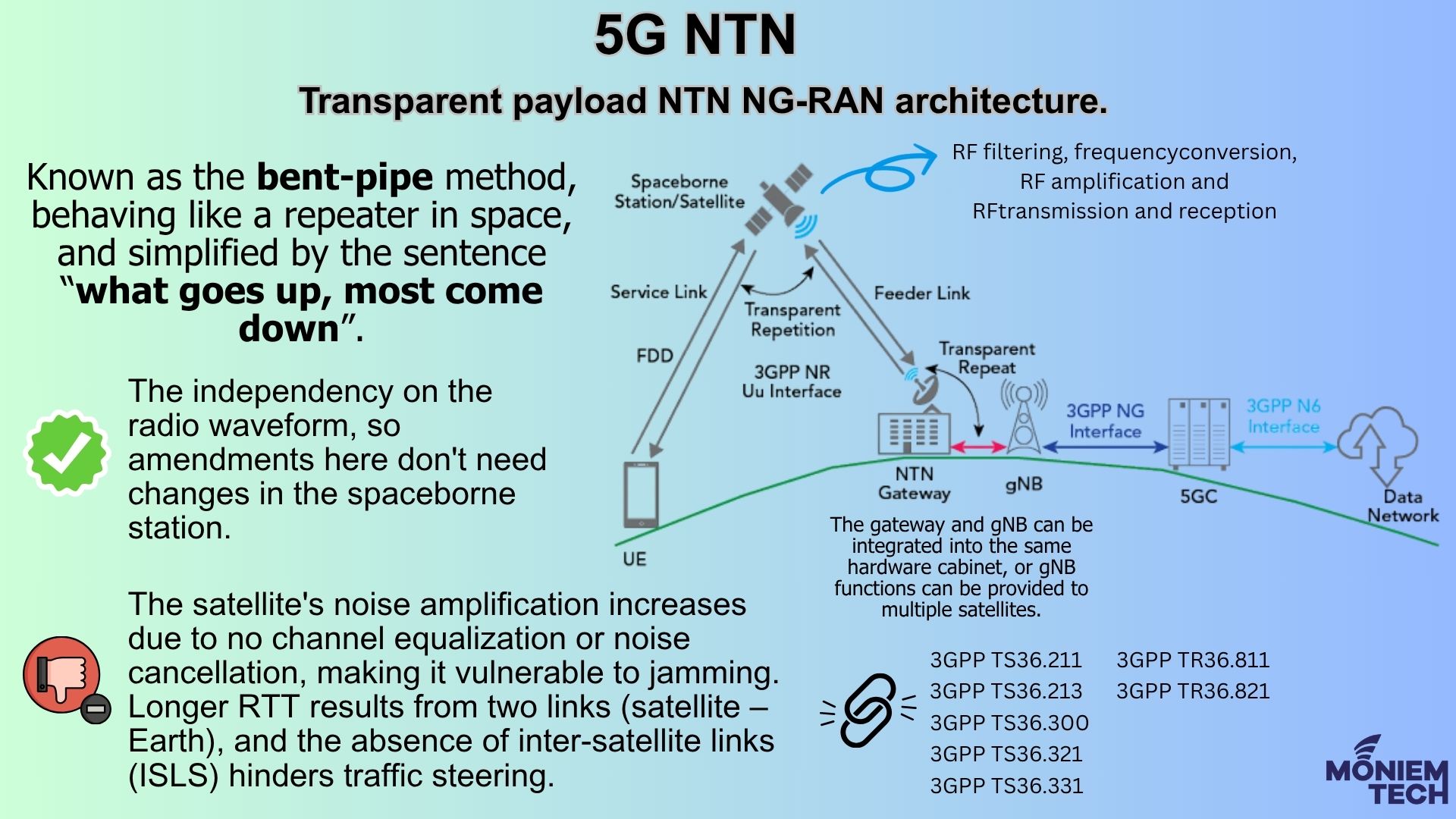When discussing 5G NTN, it’s important to understand what NTN is, how it functions, and the purpose of Transparent Architecture.
What is 5G NTN?
5G NTN refers to the integration of satellite or High-Altitude Platform Systems (HAPS) into the 5G ecosystem. It expands connectivity to:
- Rural and remote regions.
- Maritime and aviation sectors.
- Disaster-hit or infrastructure-lacking zones
3GPP began addressing NTN use cases in Release 17, with further enhancements in Release 18 and beyond.
How does 5G NTN work?
If we focus on #Transparent Architecture, in this architecture:
- UE ↔ Satellite Link (NTN RAN): The UE utilises modified NR protocols to accommodate large delays and Doppler shifts.
- Satellite ↔ Gateway: The satellite forwards RF signals to the NTN-gnb, which connects to the 5G Core Network.
- End-to-End Path: UE → Satellite → NTN-gNB → 5GC.
No processing occurs on the satellite. All Layer 2 and Layer 3 functions reside on the ground.
Why Use Transparent Payload Architecture?

- Simplified satellite design with less power, cost, and onboard complexity, which enables a longer satellite lifespan and faster deployment.
- Lower Latency as there’s no onboard signal processing, delay is minimized.
- Leverages Terrestrial 5G Capabilities, Enabling Easier integration with existing gNBs and 5GC. Updates and security patches can be handled on the ground.
To support NB-IoT over NTN, 3GPP added features such as:
- Timing Advance (TA) Extension for long propagation delays (up to 2500 km LEO).
- Doppler Shift Compensation at the UE and gNB.
- HARQ & RLC Adaptations for large round-trip times.
- GNSS-based Positioning for synchronization.
